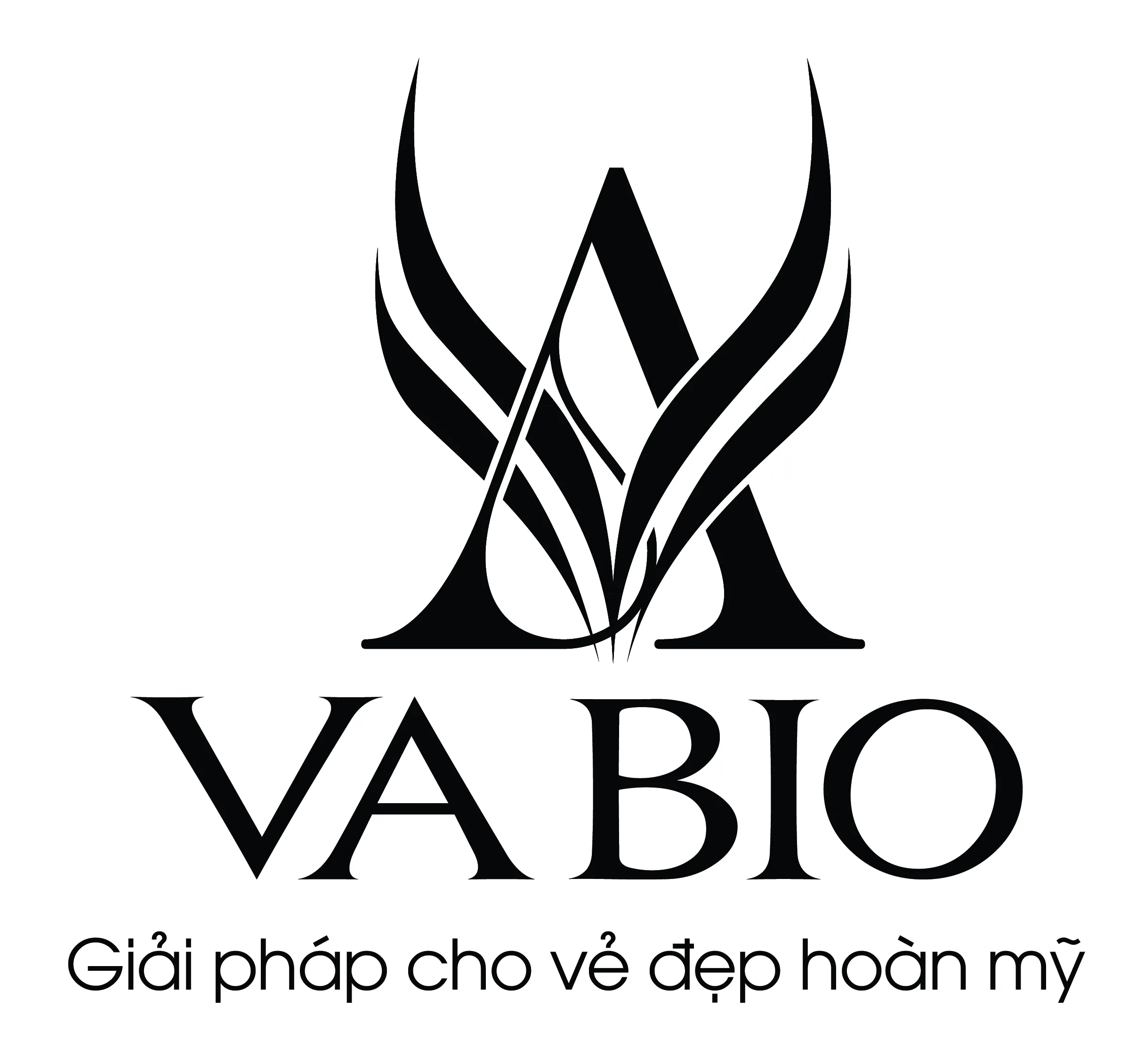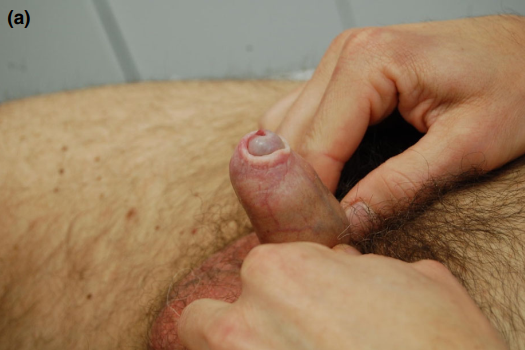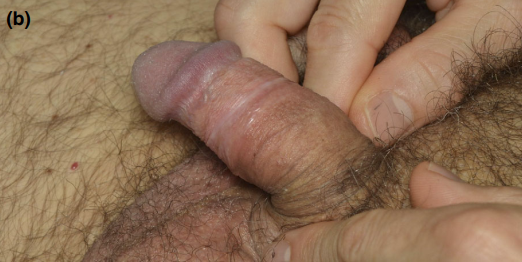Treatment of male genital lichen sclerosus with heterologous type I collagen
Male genital lichen sclerosus (MGLSc) is a chronic, progressive, inflammatory skin disorder that may cause itching and soreness and be complicated by phimosis, paraphimosis, urethral stricture, urinary retention or even renal failure in some cases.1 It may also contribute to the long-term risk for squamous cell carcinoma (SCC) of the penis.
Current guidelines suggest ultrapotent topical corticosteroids as first-line treatment in MGLSc, although there are no randomized controlled trials to establish the ideal frequency or duration. Surgical treatment, cryotherapy, ultraviolet phototherapy, carbon dioxide laser and pulsed dye laser have also been used, with variable success.2 Recurrences after circumcision or in cases where long-term use of steroids has resulted in adverse events are even more difficult to manage.
We present a patient with MGLSc who was successfully treated with injections of heterologous type I collagen (HTIC).
A 42-year-old man presented with an 8-month history of atrophic plaques involving the prepuce, frenulum and glans (Fig. 1a). He reported that for the past 12 months, he had found his foreskin difficult to retract, and he also had pruritus, soreness, discomfort and dyspareunia.
Histopathology revealed atrophic epidermis with hyperkeratosis, dermal lymphocytic infiltration and homogenization of the collagen in the upper third of the dermis. The patient had used clobetasol propionate cream twice daily for 4 weeks and subsequently once daily for 4 more weeks without clinical improvement, except for slight improvement of the pruritus. He consented to begin off-label treatment with injections of HTIC.



Xem thêm